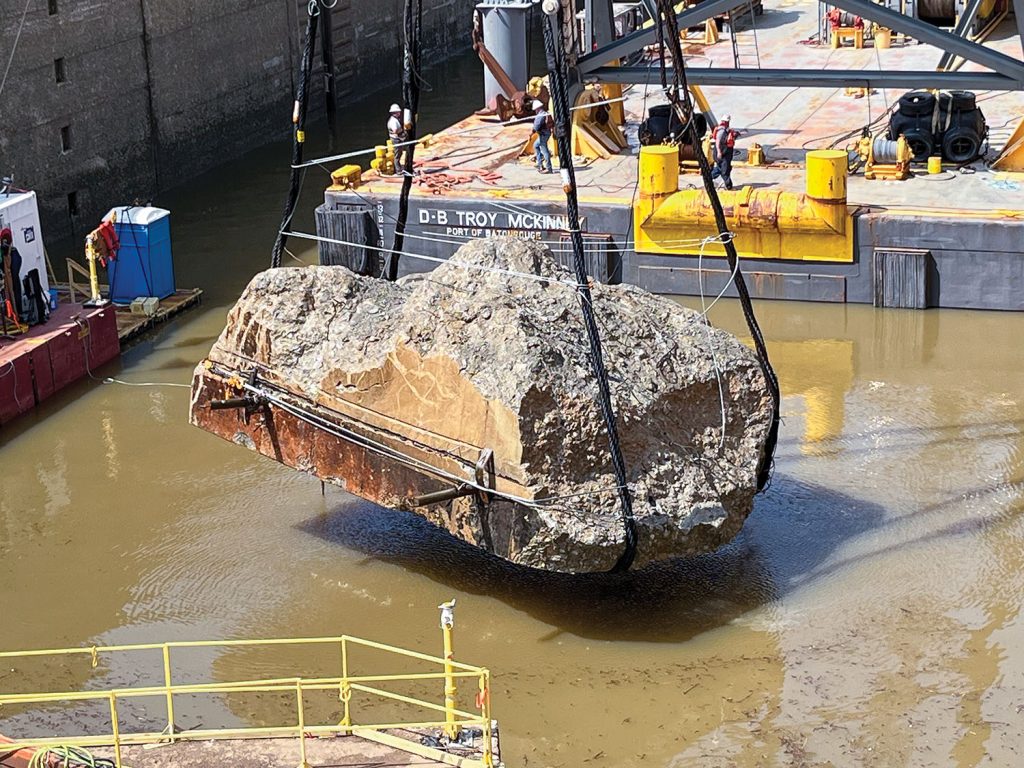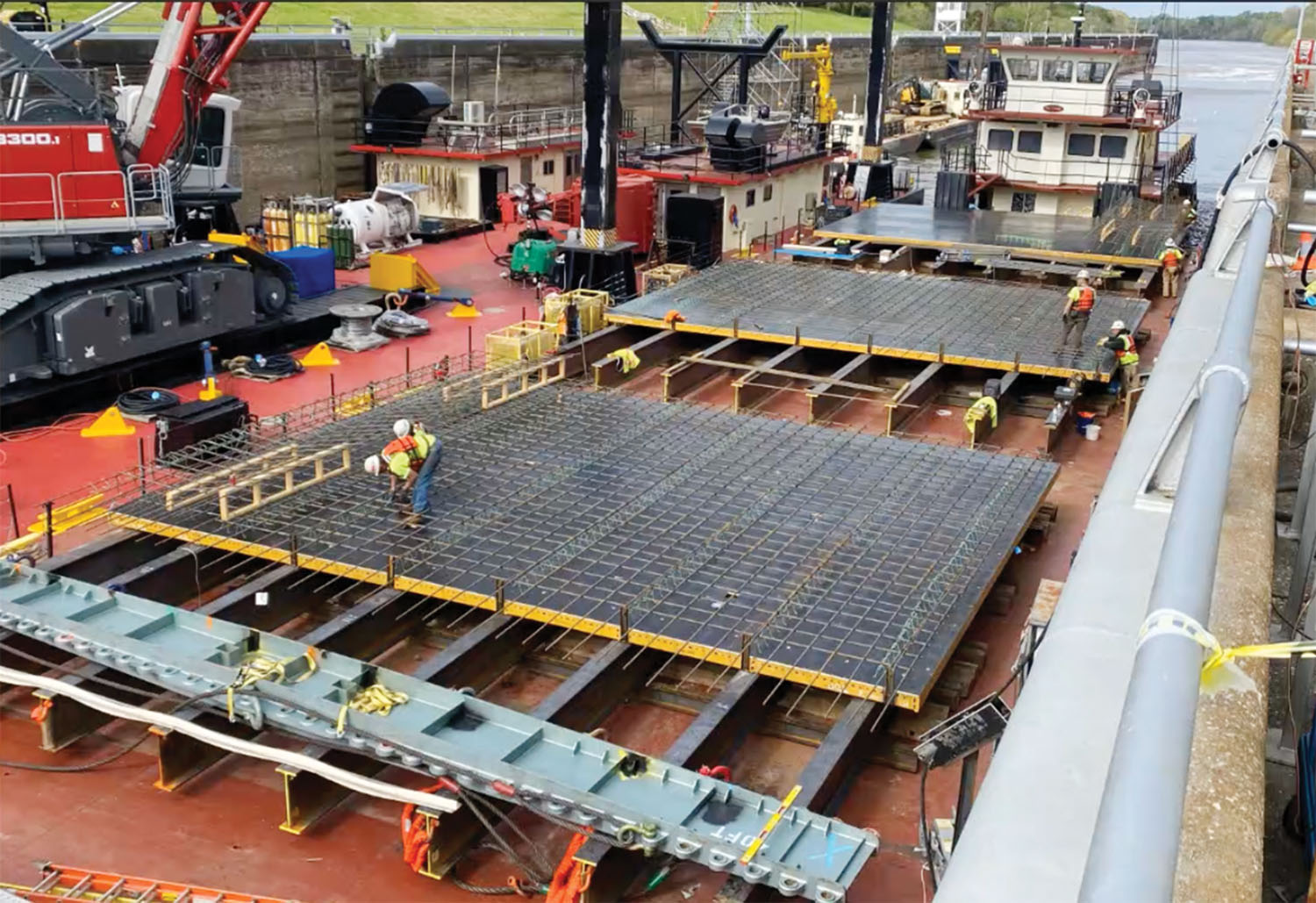The effort to repair Demopolis Lock on the Tombigbee River in Alabama has entered a new phase, now that debris removal is complete. The Mobile Engineer District marked the conclusion of that phase in mid-March, when McKinney Salvage & Heavy Lift’s derrick barge Troy removed the final two chunks of concrete from the lock chamber and placed them on the bank downstream from the lock.
The lock has been closed since the upper miter sill failed on January 16. With Demopolis Lock located just below the confluence of the Black Warrior and the Tombigbee rivers, the lock closure effectively cuts off both the Tennessee-Tombigbee Waterway and the Black Warrior-Tombigbee Waterway from the Port of Mobile, the Gulf Intracoastal Waterway and the Gulf of Mexico.

The largest piece of debris pulled from the chamber at Demopolis weighed a whopping 400 tons. According to the Mobile District, much of the debris removed from the lock chamber following the upper miter sill failure eventually will be broken down and used for riprap.
During the Mobile District’s weekly industry conference call March 27, Corps leaders said work at the lock is moving forward steadily, in spite of recent heavy rains and high water in the area.
“Our divers are working no matter what the tailwater is,” said Scott Beams, chief of the district’s technical support branch.
Of late, dive teams at the lock have been drilling holes in the lock chamber and placing rebar dowels. On a deck barge in the chamber, rebar is being installed in a series of 27.5-foot-tall forms that will eventually be placed by crane in the chamber—in the wet—and used to hold newly poured concrete in place.
Nelson Sanchez, chief of operations for the Mobile District, said he’s pleased with the resilience and determination of the contractor teams tackling the repairs at Demopolis Lock.
“It can really be exhausting, and we appreciate the work they’re doing,” Sanchez said.
The Mobile District was able to reprogram funds to cover repair work at the lock, with the lion’s share coming from money set aside for a new, long-needed Black Warrior-Tombigbee project management office in Tuscaloosa. Funding from planned maintenance at both Demopolis and Coffeeville locks was also reallocated for the repairs. Moving forward, stakeholders and Corps officials will push for Congress to reimburse that funding.
“We need to replenish those funds so the routine maintenance on the waterway can continue on track,” said Wynne Fuller, president of the Warrior-Tombigbee Waterway Association.
According to the current projected schedule for work at Demopolis, Corps officials anticipate installing anchors and continuing form work for the next two weeks, with concrete placement set to begin the second half of April. So far, the Corps is sticking with a target date of May 30 for reopening the lock to navigation.
“We are really pushing this schedule, and I’m optimistic that we’ll meet this schedule,” said Col. Jeremy Chapman, commander of the Mobile District.
Thus far, the Mobile District has spent just over $21 million on repairs at Demopolis Lock, with all of that funding billed to the Corps’ general operations and maintenance budget.
Because the failure occurred during the region’s traditional high-water season, and because the lock is unable to be dewatered with a high tailwater, the Corps and its maintenance contractor, R&D Maintenance, are conducting repairs in the wet. A batch plant just upriver from the lock will supply the cement.
In the meantime, some operators are taking the long way around to the Gulf by going north on the Tennessee-Tombigbee Waterway to the Tennessee and Ohio rivers, then following the Mississippi down to New Orleans and over to Mobile, Ala.
Caption for top photo: On a deck barge in the lock chamber, crews assemble forms that will eventually be lifted into the chamber to hold newly-poured concrete in place. (Photo courtesy of Mobile Engineer District)




